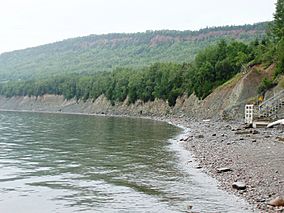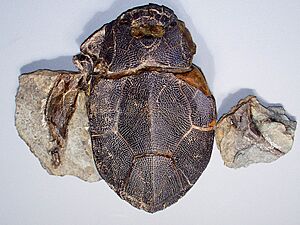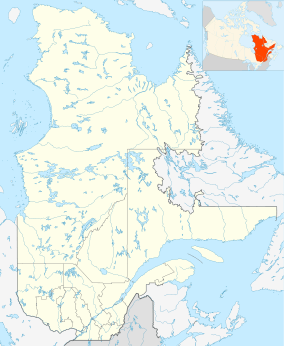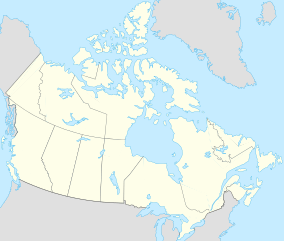Miguasha National Park facts for kids
Quick facts for kids Parc national de Miguasha |
|
|---|---|
|
IUCN Category III (Natural Monument)
|
|

Cliff of the Miguasha National Park
|
|
| Location | Nouvelle, Avignon Regional County Municipality, Quebec, Canada |
| Nearest city | Dalhousie, New Brunswick |
| Area | 87,3 ha |
| Established | 6 February 1985 |
| Governing body | SEPAQ |
| Type: | Natural |
| Criteria: | viii |
| Designated: | 1999 (23rd session) |
| Reference #: | 686rev |
| Region: | Europe and North America |
Miguasha Provincial Park (called Parc national de Miguasha in French) is a super cool protected area. You can find it near Carleton-sur-Mer on the Gaspé Peninsula in Quebec, Canada. The Government of Quebec created this park in 1985.
In 1999, Miguasha became a World Heritage Site. This means it's recognized as very important for everyone on Earth! It's famous for its amazing collection of fossils. These fossils show us a key time in the evolution of life on our planet. People sometimes call it the Miguasha Fossil Site or the Hugh-Miller Cliffs.
Contents
Discovering Ancient Life at Miguasha
Miguasha Provincial Park is like a giant outdoor museum. It helps us understand what life was like millions of years ago. The park protects a special place where ancient fish and plants turned into fossils.
The Miguasha Natural History Museum

Inside the park, there's a fantastic museum. It has lots of exhibits about the fossils found here. You can learn all about paleontology, which is the study of ancient life. The museum has over 9,000 fossil specimens. These include many different kinds of fossil fish and ancient plants.
What Makes Miguasha's Geology Special?
The coastal cliffs at Miguasha are made of sedimentary rock. These rocks are from a time called the Upper Devonian period. That was about 350 to 375 million years ago! The cliffs have layers of sandstone and shale. These layers tell a story of ancient environments. Today, the area has forests with birch, aspen, and fir trees.
Important Fossils Found Here
The fossils at Miguasha are very special. Some of the fish, ancient animals, and plant spores found here are rare. They are also very old species. For example, a plant called Spermasporites is thought to be one of the oldest seed plants ever found on Earth. These discoveries help scientists learn how plants and animals changed over millions of years.
Visiting Miguasha Park
Miguasha is a great place to visit if you love nature and history. You can explore the cliffs and imagine what the world looked like when these ancient creatures were alive. The park is managed by SEPAQ. They help protect this important site for everyone.
See also
 In Spanish: Parque nacional de Miguasha para niños
In Spanish: Parque nacional de Miguasha para niños




